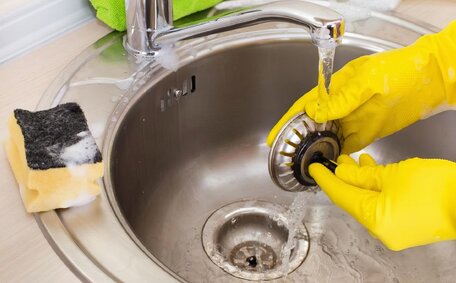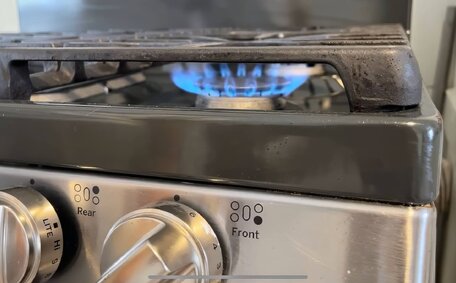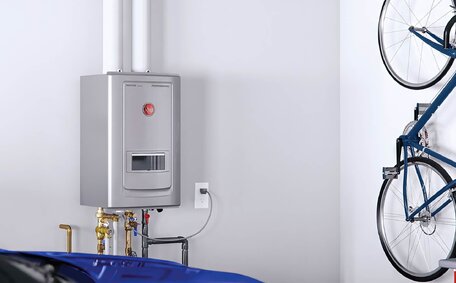What is Pipe Relining?
Sewer pipe relining is an advanced, trenchless technique for repairing drain and sewer pipes, eliminating the need to excavate pipes or disrupt floors. It involves installing a new epoxy resin pipe liner inside the existing pipe framework, which then hardens to form a smooth, watertight new pipe within the old one.
Ideal for repair of a variety of materials including clay, iron, and PVC, drain Pipe relining effectively remedies broken pipes that are structurally intact but cracked, additionally tackling blocked drains arising from tree roots, ground movement, or general wear.
Relining your existing pipe system is a versatile, eco-friendly and non-invasive solution your plumbing needs, sparing you the expensive and disruptive traditional replacements for a damaged drain.
How Pipe Relining Works
The pipe relining process is universally applicable and involves several key steps:
- First, a CCTV drain camera inspection is performed to assess the pipes, pinpoint any damage or blockages, and determine if pipe lining is the right course of action.
- Next, a high-pressure water jet cleans the pipes, removing deposits or debris to prepare them for repair.
- Next, the process includes injecting resin into the pipe, where an epoxy resin liner with a barrier coating repairs the damaged sections. This step may utilise inversion lining, where the resin-impregnated liner is inverted into the pipe, or patch relining for specific damaged sections.
- After insertion, the liner expands to fit snugly against the pipe walls, secured in place using heat, air or steam pressure.
- The epoxy resin then undergoes curing, which typically takes just a few days, signifying the task can be completed the same timeframe. This process results in a smooth, seamless new pipe lining that bonds with the old wall and can be completed within a day.
- Finally, lateral connections and junctions are reinstated if required, and the relined pipes are now restored, providing a solution to a previously blocked drain, where the work was without the cost or mess of traditional pipe replacement methods.
Materials Used in Pipe Relining
Our relining technique employs cutting-edge epoxy resins to form a tough, waterproof inner layer that saves time and extends the life of your pipes.
The epoxy resin liner, reinforced with a polyurethane layer, provides unmatched durability for pipes, resisting pressure, hot water, and harsh chemicals. Reinforcing fibreglass meshes, which can be used to enhance strength, are embedded within the liners for added impact resistance.
Another key benefit is root resistance, ensuring your blocked sewer lines remain clear of obstructions. The root-resistant nature of the epoxy used in pipe relining ensures the new pipes are safeguarded against tree root intrusions, which are a common cause of cracks and leaks. This contributes to the long term durability and reliability of the pipe relining method.
Relining with epoxy resin offers a longterm solution for various types of pipes and their associated drainage concerns, creating a robust and enduring fix without the environmental and economic costs of excavation. When cured, it creates a seamless, corrosion-resistant and smooth interior lining that will last for potentially 50+ years.
Longevity and Durability of Relined Pipes
Professionals endorse pipe relining for its ability to deliver a durable remedy, reducing future upkeep and ensuring the reliability of your pipes. The high-strength epoxy resin, protective coating, and embedded fibreglass mesh create a plumbing system component that’s highly resistant to pressure, temperature fluctuations, chemical exposure, and tree root penetration.
Due to the high-quality materials used and professional installation, the longevity of the relined pipes rivals that of new pipe installations. Pipe relining forms an integrated, seamless and relining permanent pipe-within-a-pipe, bonded securely to the interior walls, ensuring water flows smoothly for decades without leaks or failures.
Differing from merely patching pipe segments or adding slip liners, the extensive pipe relining processes we carry out ensure comprehensive repair coverage for your entire pipe systems. And with a life expectancy comparable to new galvanised iron or used pipe PVC drain pipes, relining pipe patching delivers a permanent, robust and trenchless pipe restoration solution.
Types of Pipes Suitable for Relining
Pipe relining can also rejuvenate a diverse array of pipes that maintain structural integrity, such as:
- Clay or concrete pipes
- Old steel or cast iron pipes
- PVC (polyvinyl chloride)
- PE (polyethylene)
- PP (polypropylene)
- ABS (acrylonitrile butadiene styrene)
Whether addressing any kind of issue within your full stormwater drains network or particular sections, relining delivers an impeccable solution to your water flow troubles. We can accommodate pipes of 150mm to 300mm for sewers, downpipes, and storm water systems. Smaller pipes can repaired and patched if not suitable for full inversion lining.
During CCTV drain inspections, our professionals meticulously gauge the pipe conditions and dimensions to devise the optimal drain repairs tailored for our customers. We meticulously manage every step of the process, vividly demonstrating our commitment to our customers.
Pipe Relining vs. Traditional Replacement
The relining solutions we offer provide numerous benefits compared to the traditional pipe repair approach of fully replacing old, damaged pipes:
Cost Savings
Our precise pipe relining technique avoids the substantial costs associated with excavation and landscape restoration common to conventional repairs.
Faster Installation
Pipe relining is often finalised in a single day, bypassing the need for digging or demolition, unlike replacement that can disrupt plumbing services for weeks.
Minimal Disturbance
Pipe relining minimises the impact on floors, walls, and outdoor areas, safeguarding your property’s structural integrity.
Versatile Solution
Relining rejuvenates most structurally sound pipes, cutting down on the cost and hassle associated with alternative repair methods. Relining can adeptly navigate bends and angles in plumbing systems that replacement methods may not manage.
With epoxy resin materials lasting 50+ years, there’s no invasive installation, and with significant cost and time reductions, we offer pipe relining that beats replacement hands down as a modern pipe renewal solution.
Environmental Benefits of Pipe Relining
Pipe relining is a sustainable choice that repairs pipes internally, circumventing the need for excavation and old pipe removal seen with traditional methods.
Relining preserves existing infrastructure and landscaping, keeping walls, floors, driveways, and garden beds intact, thus mitigating environmental disruption. The sophisticated used pipe relining system, which can be employed on a variety of pipe types, promises there’s absolutely no harm to established greenery and flora.
The epoxy resin materials used are engineered for longevity, so relined pipes avoid landfill for decades. Epoxy liners last over 50 years, meaning fewer resources ultimately consumed over time.
For our customers in Sydney, New South Wales who value sustainability, our pipe relining solutions offer essential underground infrastructure upgrades without damaging the natural surroundings. The trenchless method not only fixes plumbing issues but also conserves existing environmental assets for the area.
Compared to traditional methods, our pipe relining solutions significantly cut down on noise, dust, and pollution. By renewing pipes in-place with this method, pipe relining becomes a greener, cleaner, and less disruptive approach to pipe repair.
Cost Comparison: Relining vs. Replacement
Labour & Excavation
Traditional pipe replacement demands extensive excavation, incurring costs for dump fees, equipment, and labour, while pipe relining circumvents these expenses.
Materials
Pipe relining, utilising sturdy epoxy resins, costs about $300 per linear metre, while PVC pipe replacement may cost over $500 per metre in material costs.
Time & Accessibility
A standard sewer line replacement can leave a home without plumbing for 1-2 weeks, while relining is typically done in a day, avoiding any service interruptions.
Additional Expenses
Relining reduces the extra mess and disruption from tasks like landscaping, driveway reconstruction, and interior refinishing, which can inflate repair costs. Relining requires no property restoration and comes with no additional cost for after-service repairs.
Across materials, labour, time and additional costs, pipe relining provides significant savings of 40-60% over full replacement. With comparable longevity, it’s the most cost-efficient pipe renewal method.
FAQs about Pipe Relining
Here are answers to some frequently asked questions:
How long does pipe relining last?
The epoxy materials employed in pipe relining are designed to endure over 50 years, offering a lifespan comparable to that of new pipe installations when properly installed.
What kinds of pipes can you reline?
We can reline various types of pipes - clay, concrete, steel, cast iron, PVC - as long as they remain structurally sound. The technique can also accommodate pipes with bends and angles.
How long does the pipe relining process take?
Following a thorough CCTV inspection, our work includes cleaning the pipes, installing the epoxy liner, leading to restored plumbing by the day’s end.
Is my property suitable for pipe relining?
If you have pipes 150mm to 300mm in diameter that can be repaired or renewed, pipe relining is likely an ideal choice. Your plumber can evaluate your specific scenario to recommend the best options.
How do you reline pipes under floors and walls?
We employ inversion lining, inverting the pipe liner for seamless insertion into subterranean pipelines, avoiding disruptive wall or floor demolition.
Is pipe relining cheaper than replacement?
Yes, pipe relining provides savings of 40-60% over traditional pipe replacement. You avoid the costs of materials, excavation, labour, restoration works and time without plumbing.






